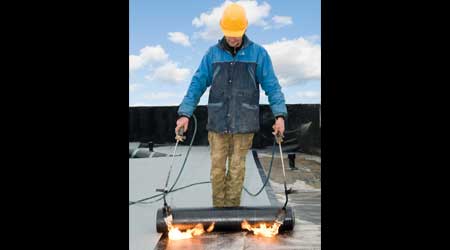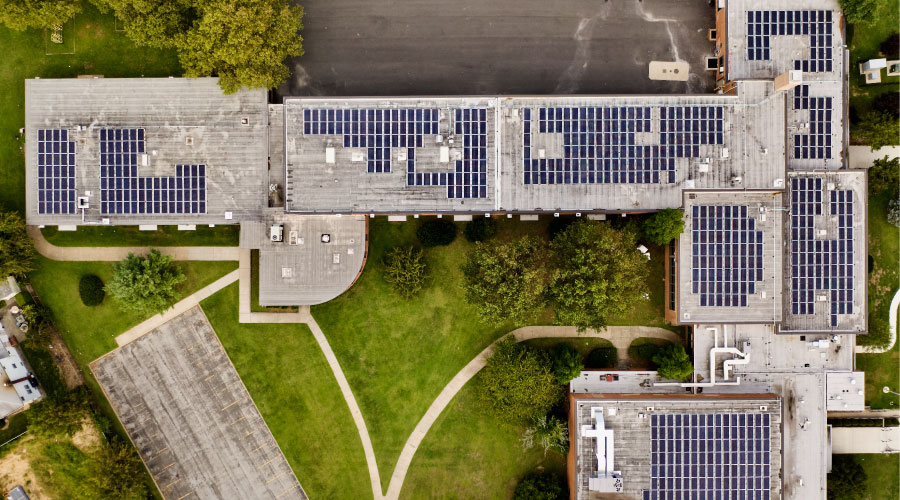8 Tips for Roofing Preventive Maintenance Inspections
Use this tip sheet to assess and inspection your roof to identify the level of preventive maintenance your roof may require.
1. Remove all debris. Debris such as loose gravel, dirt, leaves, and twigs should be removed. These materials can retain water if left on the roof. The constant moisture can cause damage to the roof, promote growth of algae and mold, and cause standing water to form.
2. Clear drains. Field drains and auxiliary drains should be cleared to prevent ponding that may cause leaks or structural damage.
3. Inspect the roof surface. Perform a visual inspection of the roof system. On single-ply roofs, inspect for holes, cracks, or fastener back-out. On built-up roofs, look for areas with missing gravel or exposed felts. Inspect roof seams and transitions for cracks or holes and have them sealed. This inspection may raise questions about the integrity of the roof membrane that justify a professional examination.
4. Inspect roof penetrations. Roof penetrations include pipes, drains, and other components that protrude through the roof surface. Roof penetrations are highly susceptible to leaks. It is very important to examine HVAC units, conduits, vents, gas lines, rain collars, and pipe boots. If that a roof penetration is leaking or damaged, the problem should be professionally diagnosed and repaired.
5. Evaluate rooftop perimeter. Walk the roof perimeter to inspect the edge details and note any areas of concern, including soft spots, mold, or algae. Inspect the flashing at walls and curbs for any punctures or damage.
6. Inspect the sealant. Keep an eye out for sealant or caulking issues such as cracking, openings, deterioration, or crazing. Sealant failures are often found around penetrations and perimeter flashings. Sealant requires regular inspection and often has to be repaired.
7. Prevent leaks before they start. A roof inspection may reveal areas of deterioration that will require repair. Repairing these small defects before they become major issues will save thousands of dollars down the road. If the damage is beyond the facility staff skill set, or you are uncertain of the proper repair, contact a professional.
8. Perform additional investigations. If the areas of deterioration require additional investigation, consider destructive testing, which requires making an opening for closer inspection, or non-destructive testing, such as infrared scanning, to determine the severity of the issue.
Nicholas J. O’Hare (nick.ohare@structuretec.com) is director of marketing and corporate quality at StructureTec. He has more than 12 years of experience in managing roofing, building envelope and paving projects for the firm.
Related Topics:















